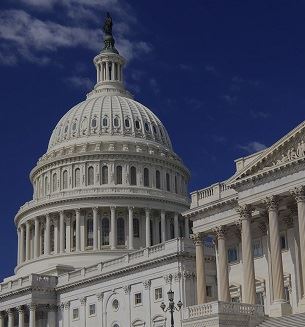Federal Crime Lawyer: Safeguarding Your Civil Liberties Against Serious Federal Charges
Federal Crime Lawyer: Safeguarding Your Civil Liberties Against Serious Federal Charges
Blog Article
Debunking the Process of Federal Appeals: What You Required to Know
Browsing the intricate realm of government appeals can usually feel like going across undiscovered waters for those unfamiliar with the process. Comprehending the nuances of appellate court jurisdiction, the ins and outs of filing a notice of allure, offering an engaging short, and making a convincing dental disagreement are vital components that can significantly influence the end result of a situation. By unraveling the layers of complexity bordering government allures, people can get a clearer understanding into the devices that regulate this critical point of the lawful system.
Comprehending Federal Appeals Refine
Exploring the complex world of the federal allures process unveils a methodical and structured journey with the judicial system. Federal appeals offer as an essential system for assessing choices made by reduced courts. Understanding this procedure is important for anybody associated with lawful process at the government level.
The procedure normally starts with an event dissatisfied with a lower court's judgment filing a notification of appeal. This causes an evaluation by a higher court, where a panel of judges evaluates the legal arguments provided by both events. Briefs detailing the lawful thinking behind each party's placement are sent, and dental debates may be heard to make clear complex problems.
The appellate court's decision is based upon a complete evaluation of the reduced court's process and the arguments offered. The courts do not reconsider truths however concentrate on whether lawful errors took place that influenced the lower court's decision. As soon as the appellate court reaches a choice, it can affirm, reverse, remand, or change the reduced court's ruling, giving clearness and finality to the legal disagreement. Recognizing this process is vital for navigating the intricacies of government charms properly.
Appellate Court Jurisdiction Described
As we proceed from understanding the government appeals procedure to dissecting the intricacies of appellate court territory, a fundamental aspect emerges regarding the authority and limits of these higher courts in the lawful landscape. Appellate court territory describes the extent of cases that a certain appellate court has the power to assess and determine upon. Unlike trial courts that listen to instances for the very first time, appellate courts are limited to examining decisions made by reduced courts. These choices can include judgments from both state and federal courts.
Appellate courts have jurisdiction over details kinds of situations, normally those including lawful errors, step-by-step issues, or inquiries of regulation instead of accurate conflicts. The territory of appellate courts is generally described in statutes and regulations that govern the court system. Understanding appellate court territory is vital for parties involved in the charms procedure as it figures out whether an instance is qualified for review and the degree to which the appellate court can intervene in the reduced court's choice.
Declaring a Notice of Appeal
The initial action in beginning the federal appeals procedure entails submitting a Notice of Charm with the appropriate appellate court. This vital file officially notifies the court and the other celebrations involved in the situation that the appealing celebration intends to seek a review of the lower court's choice. Submitting a Notice of Charm is a stringent step-by-step need that sets the appellate process moving.
When preparing the Notice of Appeal, it is important to make certain compliance with the details rules and standards of the pertinent appellate court. federal crime lawyer. The document must normally consist of information such as the situation name, the reduced court's name, the date of the judgment being appealed, and a succinct declaration suggesting the grounds for the charm

Briefing and Oral Disagreement
In the appellate procedure, offering written briefs and participating in dental debates play essential functions in supporting for the appealing celebration's setting before the appellate court. Briefs are detailed lawful papers that detail the events' debates, lawful authorities, and analysis supporting their settings. These written submissions offer the court with a comprehensive understanding of the facts of the case, the relevant regulation, and why the appealing celebration believes the reduced court's decision ought to be reversed.
Following the entry and review of the briefs, oral debates supply the parties a chance to more clarify their placements, address any type of concerns the appellate courts might have, and highlight bottom lines from their composed briefs. Dental disagreements are a possibility for the attorneys to persuade the judges through verbal campaigning for and reactions to queries from the bench.
Both the created briefs and dental disagreements are important components of the appellate process, enabling parties to provide their instance thoroughly and compellingly prior to the appellate court. - federal appeal attorneys
Getting the Appellate Court Decision
The appellate court's decision is usually supplied in a composed format and details the court's verdicts on the legal problems presented, the thinking behind their choice, and the judgment made. The time frame for receiving the appellate court's decision can differ, however courts aim to give prompt resolutions. Whether the appellate court affirms, reverses, or remands the lower court's decision, recognizing the effects of the ruling is important for all celebrations included in the appellate procedure.
Final Thought
Understanding the appellate court territory, submitting a notice of allure, preparing briefs, and offering dental disagreements are all vital parts of this procedure. Ultimately, obtaining the appellate court decision can offer clarity and resolution to legal conflicts.
As we proceed from recognizing the government charms procedure to exploring the details of appellate court territory, an essential aspect comes to light additional resources regarding the authority and limitations of these greater courts in the legal landscape. Appellate court territory refers to the scope of cases that a particular appellate court has the power to review and make a decision upon. Unlike trial courts that hear situations for the very first time, appellate courts are restricted to evaluating choices made by lower courts. Recognizing appellate court territory is important for events involved in the appeals procedure as it determines whether a situation is qualified for testimonial and the extent to which the appellate court can intervene in the lower court's choice.

Report this page